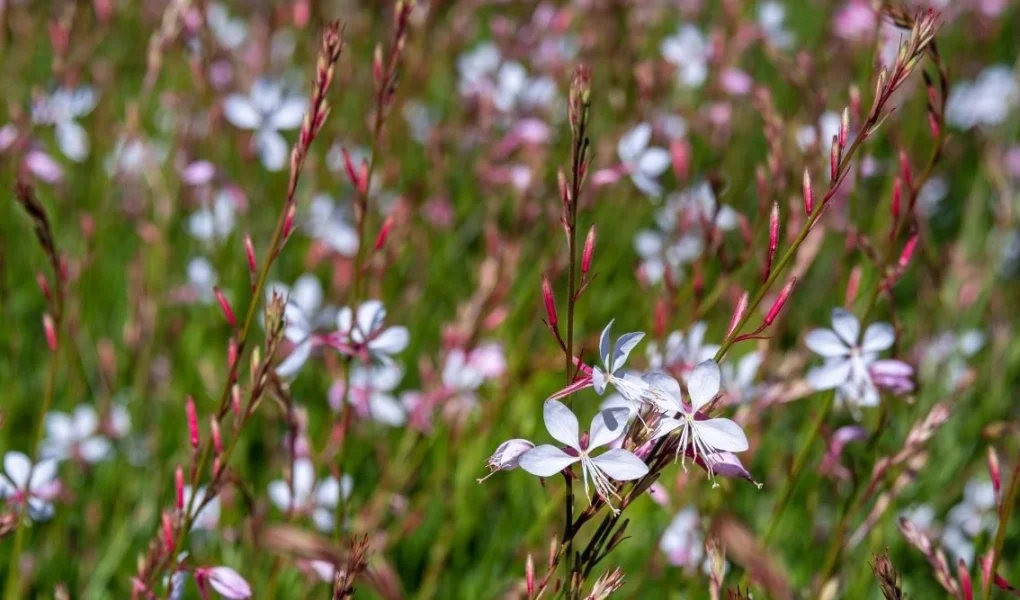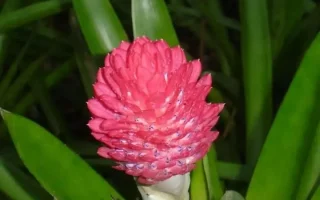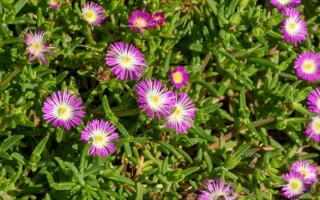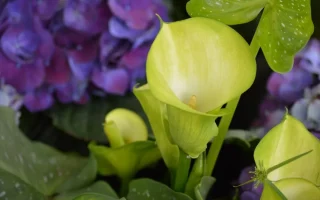kickstand-project.org – Beeblossom (Gaura lindheimeri) is a stunning perennial flower known for its delicate, airy blossoms and its ability to attract pollinators such as bees, butterflies, and hummingbirds. Native to the southern United States, this plant is celebrated for its long-lasting blooms, resilience in various growing conditions, and minimal maintenance requirements. Beeblossom adds a soft, ethereal quality to gardens, making it a popular choice for flower beds, borders, and wildflower gardens. With its graceful appearance and ecological benefits, Beeblossom is an excellent choice for gardeners seeking beauty and functionality.
Key Features of Beeblossom
- Delicate, Butterfly-Like Flowers: The most distinctive feature of Beeblossom is its beautiful, butterfly-like flowers. The blooms are small, usually 1-2 inches across, and consist of four petals that flutter in the breeze. They come in shades of white, pink, and red, with the flowers sometimes exhibiting a slight lavender tint. The flowers are arranged in loose clusters along tall, slender stems, creating an airy, almost cloud-like effect.
- Long Blooming Period: One of the main attractions of Beeblossom is its long blooming season. This plant starts flowering in late spring or early summer and continues to produce blooms until fall. The profuse flowers are produced over an extended period, ensuring a continuous display of color in the garden. This makes Beeblossom an excellent choice for gardeners who want to enjoy colorful blooms for much of the growing season.
- Attracts Pollinators: As the name “Beeblossom” suggests, this plant is highly attractive to bees and other pollinators. Its nectar-rich flowers are a favorite of native bees, butterflies, and hummingbirds, making it an important addition to pollinator gardens. By planting Beeblossom, gardeners can support local ecosystems and help provide food sources for essential pollinator species.
- Graceful, Upright Growth Habit: Beeblossom grows with a vertical, open growth habit that reaches heights of 2 to 4 feet, depending on the variety. Its narrow, lance-shaped leaves form a neat clump at the base of the plant, with long, slender flower stems rising above. The plant’s airy, light structure makes it a perfect addition to a cottage garden, prairie-style planting, or mixed flower bed.
- Drought-Tolerant and Low Maintenance: Beeblossom is known for its resilience and low-maintenance care requirements. It is drought-tolerant once established and can thrive in a variety of soil types, from dry, sandy soils to well-drained clay. Beeblossom requires minimal attention, making it a great option for both novice and experienced gardeners alike.
Growing and Caring for Beeblossom
- Sunlight: Beeblossom thrives in full sun, requiring at least 6 hours of direct sunlight per day to perform its best. While it can tolerate some partial shade, the plant produces the most abundant blooms when grown in sunny locations. In areas with intense heat, afternoon shade may be beneficial to protect the plant from the hottest part of the day.
- Soil: Beeblossom is adaptable to a range of soil types, from sandy to clay, as long as the soil is well-draining. It prefers slightly alkaline to neutral soil but can tolerate a variety of pH levels. Good drainage is essential, as the plant is prone to root rot in consistently wet conditions. Beeblossom also benefits from the addition of organic matter, which helps improve soil structure and water retention.
- Watering: While Beeblossom is drought-tolerant once established, it benefits from regular watering during dry periods, especially in the first year after planting. It’s important to allow the soil to dry out between waterings, as the plant prefers a somewhat dry environment once it is fully established. Overwatering can lead to root rot, so it’s best to err on the side of under-watering, particularly in areas with heavy, clay soils.
- Temperature: Beeblossom is hardy in USDA zones 5-9, making it suitable for most temperate and warm climates. It is tolerant of both hot summers and cold winters, though it may require some winter protection in extremely cold areas. Mulching around the base of the plant in the fall can help insulate the roots during winter.
- Fertilization: Beeblossom is relatively low-maintenance when it comes to fertilization. It does not require heavy feeding and can thrive in moderately fertile soil. If necessary, a balanced fertilizer applied in early spring can promote healthy growth and vibrant blooms. Be sure to avoid using high-nitrogen fertilizers, as these can encourage excessive foliage growth at the expense of flowers.
- Pruning: Beeblossom requires little pruning, but deadheading spent flowers can help promote further blooming throughout the season. After the first wave of blooms, cut back the flower stems to encourage the production of new flowers. In late fall, it is helpful to cut the plant back to the ground to prepare it for the next growing season. This also helps to tidy up the garden and prevent any disease buildup.
Popular Uses of Beeblossom
- Pollinator Gardens: Beeblossom is an ideal plant for pollinator gardens, where its colorful, nectar-rich flowers attract a variety of beneficial insects and animals. By planting Beeblossom, gardeners can provide a vital food source for bees, butterflies, and hummingbirds, which in turn help pollinate other plants in the garden.
- Wildflower Gardens: Beeblossom works well in wildflower gardens, where its light, airy structure complements other native plants. Its extended blooming period ensures that the garden stays colorful throughout the season, providing a continuous supply of nectar for pollinators.
- Cottage Gardens: Beeblossom’s graceful, upright growth habit makes it a perfect addition to cottage-style gardens. It pairs well with other soft-textured plants like lavender, coneflowers, and daisies, creating a relaxed, informal garden aesthetic. Its long-lasting blooms add continuous color and movement to the garden, making it a standout in mixed plantings.
- Border and Foundation Plantings: Beeblossom’s upright habit makes it an excellent choice for creating garden borders or for planting along the foundation of a home. Its delicate flowers add a touch of lightness and elegance to the garden, softening the appearance of walls and fences. Planting it in clusters can create a striking effect that catches the eye from a distance.
- Containers and Hanging Baskets: Beeblossom is well-suited to container gardening, where it can be grown in pots, hanging baskets, or window boxes. Its airy flowers create a graceful effect in containers, adding movement and color to patios, decks, and balconies. Beeblossom’s drought tolerance makes it a great choice for gardeners who want low-maintenance plants for their container gardens.
Companion Plants for Beeblossom
Beeblossom pairs beautifully with a variety of other plants, including:
- Echinacea (Coneflower): The bold, daisy-like blooms of Echinacea complement the delicate, airy flowers of Beeblossom, creating a visually pleasing contrast.
- Black-eyed Susan (Rudbeckia): The bright yellow flowers of Black-eyed Susan provide a cheerful contrast to the pink and white blooms of Beeblossom.
- Lupine: Lupine’s tall, spiky flowers pair well with the airy, flowing blossoms of Beeblossom, creating a dynamic visual effect in garden beds.
- Salvia: The spikes of purple or blue salvia contrast nicely with the soft, fluttering flowers of Beeblossom, creating a harmonious blend of textures.
Conclusion
Beeblossom is a charming, low-maintenance perennial that adds a delicate touch of beauty to any garden. With its long-lasting blooms, drought tolerance, and ability to attract pollinators, Beeblossom is an excellent choice for creating a wildlife-friendly, visually appealing garden. Whether planted in flower beds, containers, or wildflower gardens, Beeblossom’s airy flowers and graceful growth habit make it a perfect addition to any landscape. With its ease of care and ecological benefits, Beeblossom is a plant that offers both aesthetic beauty and environmental value to gardeners of all levels.




